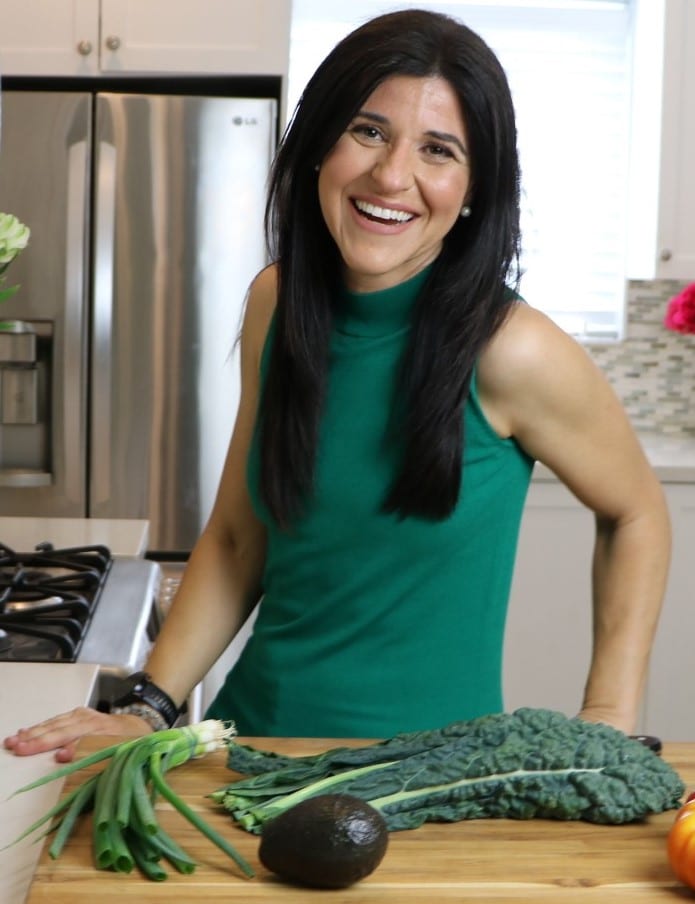I posted this blog last year. & while I’m reposting it, I’m doing so because it’s still the same this year as it was last year with what I believe and teach to my clients. I’ve been reading blog after blog about what the “2015 Nutrition Trends are. I’m not sure if cauliflower will rule the roost or if kale will still be the veggie to beat. What I do know is that it really still comes back to variety, balance, and moderation. There are too many dark, green, leafy vegetables to only eat just kale. And as my lovely yoga teacher taught me, “You must begin from where you are at.”
If you came into my office and you’re eating out most meals, your goals are going to be different then the person who is already cooking most meals at home. FYI, I just checked out Mark Bittman’s book, “How To Cook Everything Fast”. I’ll have to let you know my thoughts after I finish reading the book. It’s only 1,000 pages long. Let’s hope I have time to read the book!
A client asked me just the other day what changes I have to make. I guess they thought I eat perfect. I mean I’m almost perfect when it comes to eating, but even I have room for improvement! I think the goal is to continually work towards improvement. The moment you think there’s nothing to change you begin to fall into your routine eating habits and while they might not be horrible there’s always room for improvement! Here’s a few things I’ve recently changed/switched:
-I only eat brown rice. No more white rice for me! (I eat plenty of other whole grains and on occasion would have the white rice. Now I’ve just given it up completely. That’s what wearing a DexCom sensor will do to ya!
-I no longer use a certain “non-stick cooking spray”. I bought my own pump spray and put a mixture of oils in it. Now I can spritz away, but with only healthy oils.
-While I was in California we bought what I thought was a honeydew. It was a honeydew, only instead of being green it was orange on the inside! I don’t even think I knew there was such a thing! I’ll definitely be looking to try any and all exotic fruit possible. Maybe this year will be the year I’ll try durian…if only I can get past the smell. And let’s not leave the vegetables out. I definitely eat plenty of vegetables, however, I get in a ruthless with the ones I do eat. I’ll definitely be looking to include more variety when it comes to my vegetables.
On the exercise side I do run and do yoga. For Christmas I got a FitBit. Well, I got a picture of a Fitbit. Mine has yet to be delivered (the version I got was on backorder.) My goal with exercise/activity is to really make sure I’m getting 10,000 steps a day. There really should be no excuses for me. Sure I sit at my desk all day, but that should be my reminder to get up and get moving as much as possible: a short walk at lunch, after dinner, whatever it takes. Just do it!
Lastly, resolve to be present. Don’t get me wrong, you can have goals (resolutions, whatever you want to call them) that you’re working towards, just be present each and every day. Your habits are changed by your practicing new behaviors. If you go one day without sugar (one day without smoking, one day getting 10,000 steps) at the end of the day you’ve changed. The following day will be a new day. Decide again to go without sugar, don’t let your old habits derail you from the present moment. (Your old self will definitely try and tell you to start eating sugar again, what’s the use?) Deciding each and every day to continue with this change, that’s being present.
So read on for a few helpful tips to help you be successful in this new year!
“Starting this year, I am going to eat right, exercise regularly, and lose this weight once and for all.” Sound familiar? The number one New Year’s resolution is to lose weight, and for good reason: More than 150 million Americans are overweight or obese (65%), and across the globe an estimated 1.5 billion are affected. Struggling with obesity is the problem of our time. One-quarter to one-third of all cancers can be attributed to obesity. Being overweight and/or obese is also a strong risk factor for type 2 diabetes, heart disease, hypertension, joint and back pain, and a host of other medical problems. The diseases associated with obesity cost our medical system an estimated $147 billion per year.
Your enthusiasm and desire are high on Jan. 1, but come February, those good intentions often wane, and old habits return. How can you keep this from happening to you? First, make sure your fitness goals and eating plan is realistic. Remind yourself how long it took to gain this weight, and be patient as you slowly make lifestyle changes that will eventually help you improve your health and reach your weight loss goal.
Here are some tips to help you stay motivated all year long:
Keep portions in check. Studies have shown that the more you are served, the more you will eat. Serve yourself small portions of rich, high-calorie foods and large portions of healthy foods like vegetables, salads, and broth-based soups.
Take concrete steps to improve your eating and exercise habits. Most people believe they know what they need to do to be healthier, but are not doing it. The reasons? Lack of motivation, competing priorities, and time restraints. It’s important to find the inspiration you need to help you take concrete steps to improve your health. Do you want to live a longer, healthier life? Write down whatever motivates you, and keep it close at hand to help inspire you toward success.
Believe in yourself. Expect to be successful. In order to succeed, you must believe in your ability to control what you eat and how often you exercise. When the going gets tough, seek the support of a friend, workout partner, or family member. A positive attitude and an enthusiastic approach to a healthful lifestyle set you up for success.
Track your food intake and physical activity. The simple act of writing this information down has proven to be one of the most powerful weight loss tools. The act of writing it down is about holding yourself accountable. You might also want to note how you were feeling right before you ate it. Were you angry, sad, or bored? We often focus so much on foods and calories, but our emotions are a huge part of our eating habits.
Enjoy how good your healthier weight feels. Are you more energetic? Sleeping better? Maybe your doctor has even remarked on your improved blood pressure, blood sugar, or cholesterol level. Taking off even a few pounds can do wonders for your body and your health. When you’re tempted to abandon your healthy eating plan, remember how good it feels on this path towards being healthier.
Fit in fitness. Physical activity is essential to burning calories and losing weight – especially important this time of year – relieving stress. Eating healthy and exercise go hand in hand. If your schedule is crazy, take 10-minute breaks throughout the day to power up your jump rope, walk around the block, or whatever you can to fit in some fitness. A pedometer is a good tool to use to see how many steps a day you’re getting. We are a sedentary society (driving to work, sitting at our desks all day). Incorporating more steps throughout the day is helpful in increasing our activity level. It’s time to move more!
Stay away from Fad Diets and Crash Diets. I know how tempting diet crazes can sound, especially if you have a lot of weight to lose. You hear about stars who did it and look incredible. But remember, if a diet plan sounds too good to be true, it probably is. Skip any programs that promote detoxification pills, laxatives, fasting, or potions, and any that promise weight loss faster than 2-3 pounds per week. Fad diets also set you up for failure by depriving you of what you want. You can’t eat like that for long, and it’s too likely that you’ll end up back where you started.
Satisfy cravings. The best-laid plans can go astray when you’re faced with insatiable cravings for sweets or other favorite foods. So satisfy your cravings with a small portion of the food you desire. If you deprive yourself of these foods, odds are that you’ll end up bingeing on them and overdue it. People who manage their weight the best are not those who crave foods less often but those who give in some of the time.
Check your measurements. Body measurements can be a useful way to track your progress. Many times you’ll see a loss of inches even if the scale isn’t moving. To ensure accuracy, measure in exactly the same place and under the same conditions each time. Some common body measurements you can keep track of: bust, chest, waist, and hips. You can also use your waist and hip measurements to calculate a Waist to Hip ratio, an assessment that can help you determine your health risk. The number on the scale isn’t always an indicator of your overall progress.
Losing as little as 5% to 10% of your body weight can help you feel better and improve your overall health. Lightening your load a few pounds at a time can be invigorating and energizing. Here’s to 2015 being your time to lose weight and keep it off!






